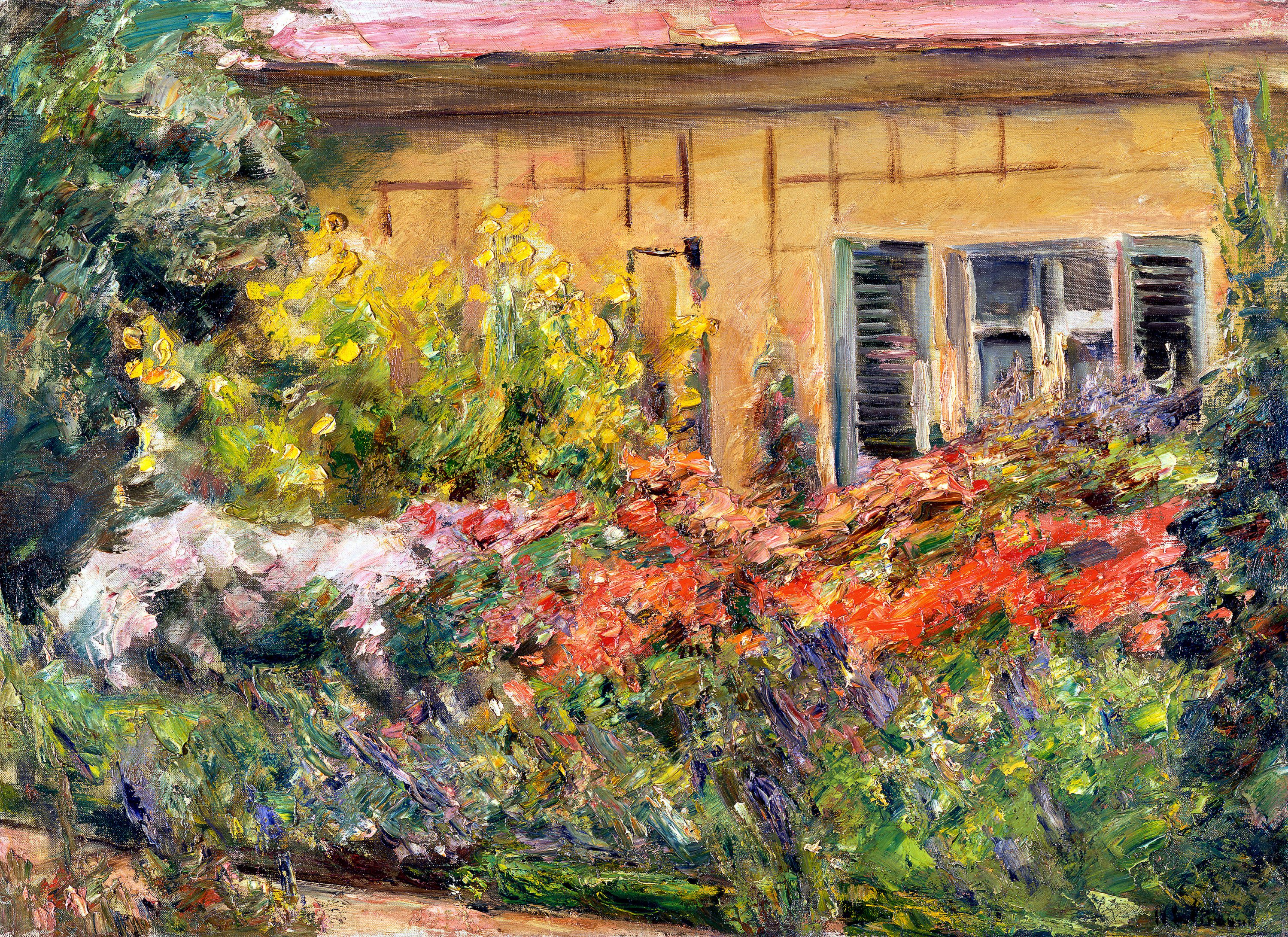Max Liebermann was already a widely famous painter when he began his series of garden paintings. He had spent his summers in Holland for several decades. Here he found the motifs for his naturalistic works and here he increasingly turned to impressionistic tendencies in the 1990s. From 1910 onwards, the over sixty-year-old opened up a new living environment at Wannsee and enriched his work with a completely different component with over 200 garden pictures.
In 1909, Liebermann acquired the property on the Großer Wannsee in Berlin, the following year he had an elegantly simple house built on it, influenced by classicist models, and in constant communication with his friend Alfred Lichtwark, the director of the Hamburger Kunsthalle, he built a highly modern, create a geometric-formal garden. From 1914 onwards, also prompted by the First World War, he spent his summers in Wannsee and captured the same parts of his garden in ever new paintings and pastels. An entire block of work was created in a very small space. These pictures defy stylistic classification, which the old Liebermann had already become completely indifferent to.
The beginnings of Impressionism can still be seen; Liebermann also decorated the walls of his country house in the summer with pictures by Manet, Monet and other Impressionists. Some works, on the other hand, especially those in the perennial garden, approach works of Expressionism in their lush colors. However, Liebermann consciously stuck to the color of the object, rather he adapted the planting to his respective color wishes. The images of the flower terrace, on the other hand, are usually clearly and clearly constructed, structured in terms of shape. They seem to be shaped by the aesthetic expectations of the 1920s. Some depictions disappear into a shimmering atmosphere, others remain objectively cool.
In his verbal statements, Liebermann referred neither to the optical vision of the Impressionists, “being one eye and only one eye,” nor to the emotional desire for expression of the Expressionists. He described himself several times as a pantheist, referring to Goethe, Spinoza, and many other Jewish intellectuals since Heinrich Heine. Liebermann sought a subjective expression with respect for the objective, not unlike the late Monet.
For a long time, Liebermann's garden paintings were overshadowed by the large, important, naturalistic figure paintings, such as the flax spinners or the shoemaker's workshop, which are still among the highlights of the permanent exhibition in the National Gallery today. At the major Liebermann exhibition in the Alte Nationalgalerie in 1997, they seemed to stand out compared to the larger compositions. Now a separate show is dedicated to the garden pictures and they develop an unexpected splendor and painterly richness, as one could first experience in the Hamburger Kunsthalle, the first stop of the exhibition. Liebermann's garden pictures tell little, they are mostly deserted and undramatic unromantic.
With a consistently intense attention to the same motifs, the flower bushes on the gardener's house, the flower terrace, the birch avenue, Liebermann traced colors and shapes and the painting itself, and this has a surprisingly cheerful and happy effect.
